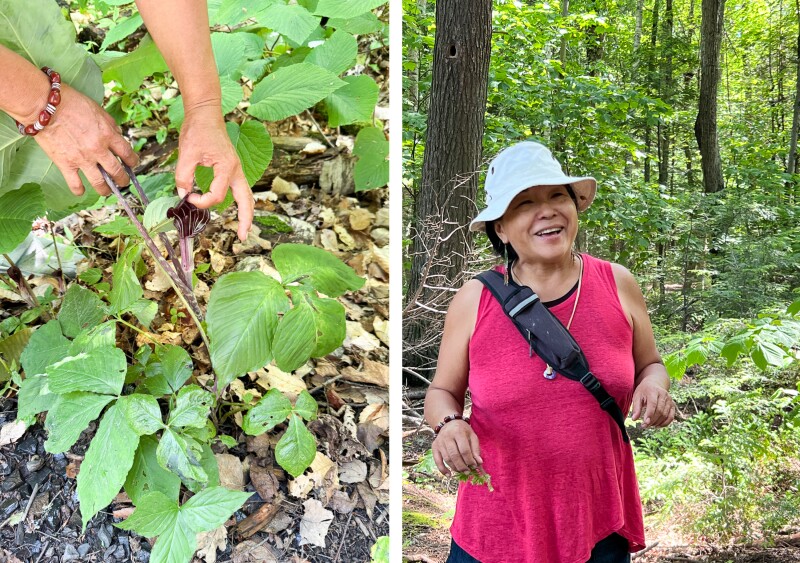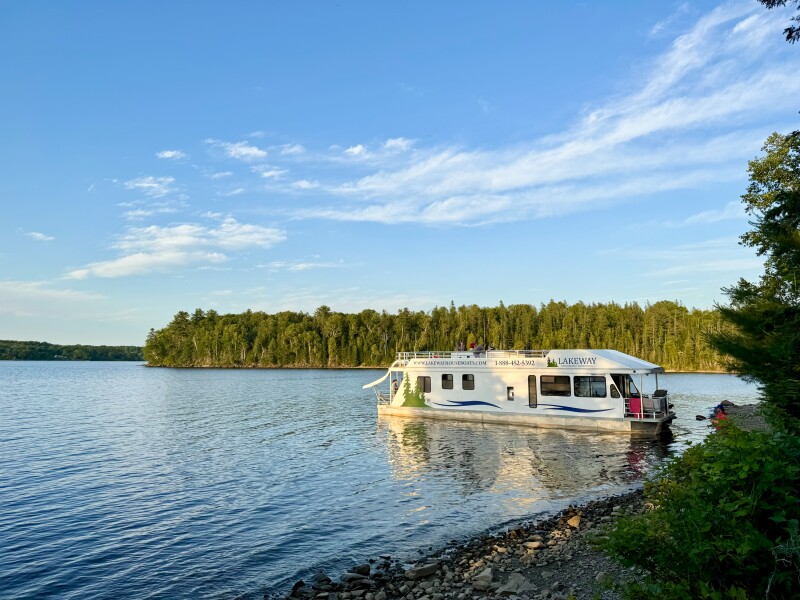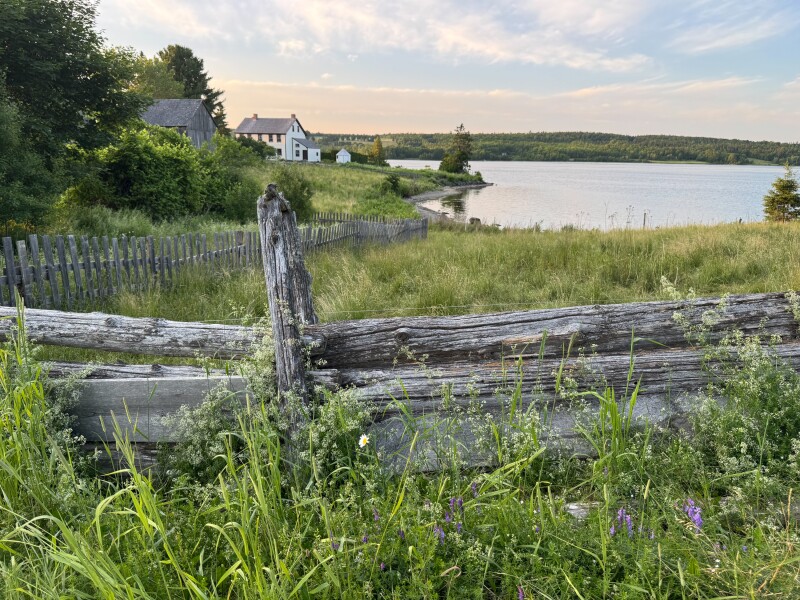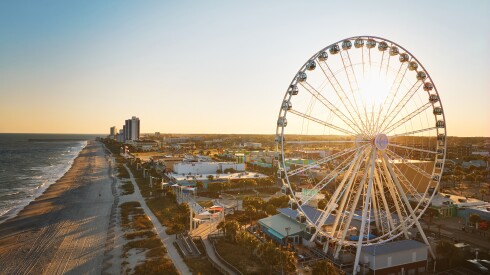This article is part of a series celebrating communities, culture, traditions, and adventures throughout Canada. We’re spotlighting exciting people and places across the country’s provinces, from British Columbia in the west to Newfoundland and Labrador in the east. Read more stories at afar.com/canada.
French explorer Samuel de Champlain named the St. John River for St. John the Baptist from the Christian Bible in 1604. But the people who thrived along the water for thousands of years before European colonization had a different name for it: Wolastoq, which in the Maliseet–Passamaquoddy language roughly translates to “beautiful and bountiful river.” Indeed, the river was so bountiful and essential to the lives of the Indigenous people here that they called themselves the Wolastoqiyik.
That Indigenous population along the river, which runs more than 418 miles through Maine, Québec, and New Brunswick, was decimated after the arrival of European settlers. Today, there are only six Wolastoqivik First Nations communities in New Brunswick, along with one in Maine, but Indigenous leaders have continued to lobby for the restoration of the river’s traditional name (efforts so far have proven unsuccessful). However, thanks to these peoples’ long history and spiritual connection with the waterway, the Canadian government designated the river as Wolastoq National Historic Site in 2011 and a Canadian Heritage River in 2013.
This connection with the river is also what brought my family there for eight days earlier this summer. We came seeking both cultural enrichment and family fun. We had long talked about doing a houseboating trip together, and recently a friend from the New Brunswick provincial capital of Fredericton told me about Lakeway Houseboat Vacations on the St. John River, which offers the only houseboat rentals in Atlantic Canada. I like the idea of slow travel—and really, what’s slower than a houseboat?—and taking the time to truly connect as a family, but it was the river’s First Nations history and the cultural experiences that made it a perfect fit. I have Huron-Wendat ancestry, and three of my grandchildren also have Métis ancestry from their mother’s side. Interacting with Indigenous cultures when we travel gives the children an opportunity to better understand a part of who they are—and it can give anyone a link to history that has largely been suppressed.

Cecilia Brooks, a Water Grandmother and member of the Sitansisk Wolastoqiyik community in Fredericton, teaches travelers about plants used for traditional medicine on her Wabanaki Tree Spirit Tours.
Photos by Greg Olsen
So, in late June, 14 of us (9 adults, an infant, and 4 kids, ages 4 to 8) headed to New Brunswick. Before boarding our houseboat in Mactaquac, just outside Fredericton, we began with a bit of cultural immersion: a medicine walk in Fredericton with Cecelia Brooks’s Wabanaki Tree Spirit Tours. Aside from owning and operating the tour company, Brooks is an Indigenous medicine keeper who the Canadian Rivers Institute tapped to be a “Water Grandmother,” a position that advocates for the conservation of the river both on the environmental and community levels.
Brooks displayed a wealth of knowledge on our walk through the old growth forest of Odell Park and the Wabanaki Healing Garden at the Fredericton Botanic Gardens, pointing out plants and explaining their traditional uses in medicines, foods, and ceremonies. “This plant has antimicrobial properties,” she said, gesturing toward a Jack-in-the-pulpit, also known as an Indian Turnip. “But it can be toxic if it’s not used properly.” Most fascinatingly, at the end of the tour she shared the legend of how the Wolastoq River was created: A monstrous frog named Aglebe’m caused a drought by holding the water back, until a hero named Keluwoskap cut down a tree that hit the frog on the head, releasing the water. The tree became the Wolastoq, and its branches formed the main river’s tributaries.

Lakeway Houseboat Vacations’ boats sail on the Mactaquac Lake stretch of the St. John River, which was formed by the construction of a hydroelectric dam in the 1960s.
Photo by Greg Olsen
Inspired by that creation story, we were ready to get out on the big river. Our floating home offered a sense of adventure and exploration: We could see for miles up and down the river, and from the top of the boat we spotted several bald eagles soaring high above. The houseboat was also quite luxurious, with five queen staterooms, a kitchen, a propane barbecue, two bathrooms, and a rooftop hot tub, which some of us relaxed in while others pulled out fishing rods and trolled the water behind the boat.
In the late afternoon, about 10 miles upriver, we pulled into Jewetts Cove, a small bay that buzzed with young adults and teens on motorboats and Jet Skis. We weren’t thrilled about the noise, but we moored the houseboat at the shoreline, securing it to stakes and trees, and swam in the cool water to escape the afternoon heat. As dusk approached, the crowd dissipated, and we had the cove all to ourselves. After a delicious dinner of chicken we barbecued on the front deck, we settled in for a peaceful night.
Each day on the boat began with me, the early riser in the group, taking in the scenery alone on the top deck. On that first morning, just after sunrise in Jewetts Cove, the water was utterly still, the trees along the shoreline perfectly mirrored in its glassy surface. In that moment, I felt connected, the way I imagined the Wolastoqiyik people felt joined to the river. I understood the desire to protect and nurture this sacred source of life for future generations.

Kings Landing functions as an open-air museum, with 70 historic buildings and nearly 90,000 artifacts.
Photo by Greg Olsen
Our five days on the houseboat flew by. We saw the World’s Largest Axe, a 49-foot-tall, seven-ton monument to the region’s postcolonial history of forestry, in the tiny village of Nackawic. We also visited Kings Landing, an open-air living museum that shows how 19th-century European settlers lived here. Two of the children caught their first fish. I think the kids would have been happy to spend another week on the houseboat, but I found myself eager to delve back into Wolastoqivik culture.
After returning the houseboat, we checked into the Crowne Plaza Fredericton – Lord Beaverbrook hotel and went to visit St. Mary’s First Nation (or Sitansisk), an urban Wolastoqiyik community right across the river from the capital city’s downtown. During an excellent lunch of seafood chowder, lobster rolls, and fish and chips at Wolastoq Wharf, the Nation’s fine dining restaurant, we met Wayne Brooks, an Elder and artist who told us about his family’s history of canoe-building—including one very special canoe.
“I was watching the news on TV in 2007, and they showed a canoe that they said was one of the oldest surviving birchbark canoes in the world,” he explained. “The canoe had been taken to Ireland in 1825 by a British officer, and it was being returned to the Canadian Museum of Civilization [now renamed the Canadian Museum of History] for restoration. I was jumping up and down, because I knew it was the Grandfather Akwiten Canoe made by my ancestors. Our oral history spoke of the canoe, and you could tell just by looking that it was a Wolastoqiyik canoe.”
Negotiations by members of the St. Mary’s First Nation led to the canoe being returned to Fredericton, where it is now on display at the Beaverbrook Art Gallery. After speaking with Brooks, we went to the gallery to see it. As we looked at the 200-year-old, 20-foot-long canoe, it was impossible not to feel moved by the long ties between the Wolastoqiyik People and the river.
We saw that connection most clearly on our last day in New Brunswick, when we took a kayaking tour with Little Stone Bear of Wolastoq Adventures. While we paddled up the river, a bald eagle swooped down and caught a fish in its talons. “In our culture and other Indigenous cultures,” Bear explained, “we hold the eagle in high regard, because it is the being that flies closest to the creator. We believe it takes our prayers to the creator.”
In that instant, I had just one prayer in my heart: That I, and my children, and my children’s children would once again return to interact with the beautiful and bountiful river—and the people who have called it home for millennia.
Helpful resources if you visit
- Websites for planning an Indigenous-themed trip to Fredericton area: New Brunswick Tourism, Fredericton Capital Region, Indigenous Tourism Association of Canada.
- Air Canada offers direct flights to Fredericton International Airport (YFC) from Toronto, Ottawa, and Montreal.
- Houseboat rental rates with Lakeway Houseboat Vacations start at CAD$952 (about US$695) for four days midweek. The season runs from June through early October.
- For our additional days in Fredericton, we stayed at the Crowne Plaza Fredericton – Lord Beaverbrook (summer rates from US$162), which is located on the waterfront, right in the heart of downtown. The on-site Joyce Pub boasts the largest selection of local craft beer and cider in the province, with 36 rotating taps.











